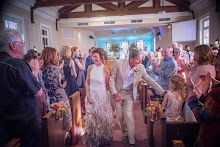Dec.31: Nature and Love
NATURE AND LOVE
Nature is who we are, so loving Nature is just our real Self loving our real Self. Of course, loving another person is this, too, this God loving God. This is “falling in love,” which is a falling away of the veils of I am over here, you are over there, we are separate. That veil falls away. I am you, you are me, we are one. Won-derful. I want to be with you because you are me and being with you is being closer to me, to God, to Reality.
Something like that.
And, too, falling in love can be as simple as loving the strawberry in our mouth; it tastes so sweet as it merges with us.
Roses are strawberries for the eyes and the nose. A giant redwood is a strawberry for the mind and the heart and the arms, if you are willing and able to give one a hug. That feeling of deep peace that emanates from the hugged redwood, just writing it reminds me that it’s been awhile since I’ve hugged a grandfather tree. Better get to it, Chris. Even to look at the redwood is to sense that mighty, rooted grandeur, to begin to take a little of that as food for our souls.
A grand tree is hard not to love. Many people, to most of us, are easy not to love. Why is the tree so much easier? Because we take the tree just as it is, we relate to it as being just what it is. We don’t want it to lose ten pounds, don’t want it to stand up with a little more perk, don’t want it to be a rose, don’t want it to learn English, or Spanish, or Sanskrit, don’t care if it can do yoga, don’t care how much money it makes, don’t care what its political view are. Begin to get the idea of the burden of all our requirements in the human world, and how free we are of those requirements in the realm of Nature?
Even better for our souls and our ability to love, around the redwood tree we are free from all that greedy grasping and wanting that is our lot around people. We don’t want the redwood to like us, love us, appreciate us, approve of us. But we can give those qualities without getting, for a tree, for a rose, for a sunset. How about that? We can appreciate a sunset without demanding that it appreciate us. We can love a rose without needing love in return. We can worship a meadow or the ocean or a cloud without demanding worship in return.
A good teacher, Nature, a teacher in what love really is. We give, we don’t worry about what we are getting, we like it just as it is: this is why we feel so good when we connect with Nature in a straightforward and appreciative way. Think how un-fun a hike would be if we were obsessing about whether the creeks and the clouds and the rocks and the wildflowers really understood and cared about us. Think how wonderful it is to just get outside, move the body, breathe the fresh air and dig on What is as just how it is. Ain’t that a kick. And it’s so easy, if…
If we break the house box habit, car box habit, and just get to the garden, get to the meadow, get to the trail, get to the ocean: go out and fall in love, again and again, with Nature, with the God that comes shining through Nature. This is who we really are, might as well give ourselves the chance to get back home.








